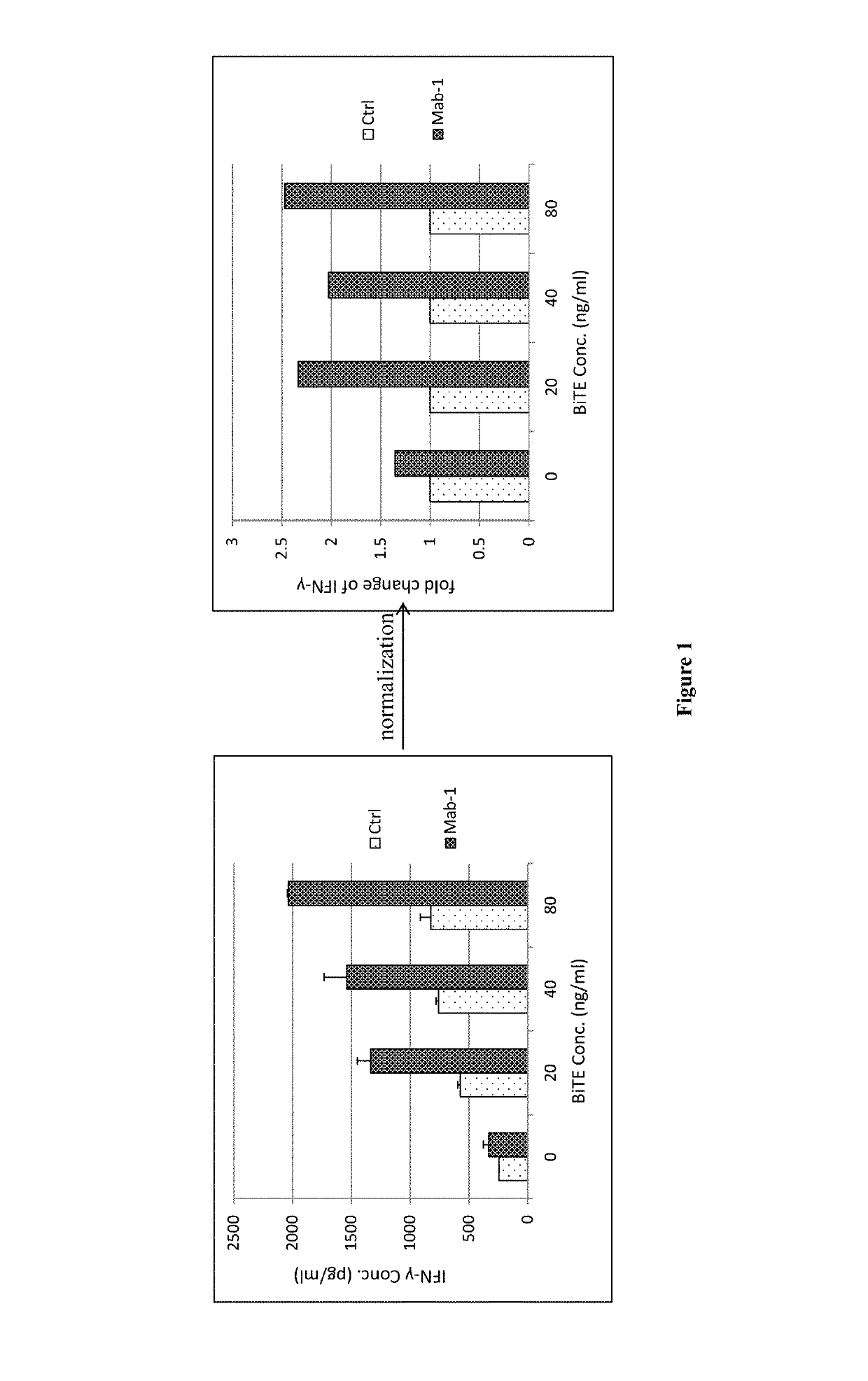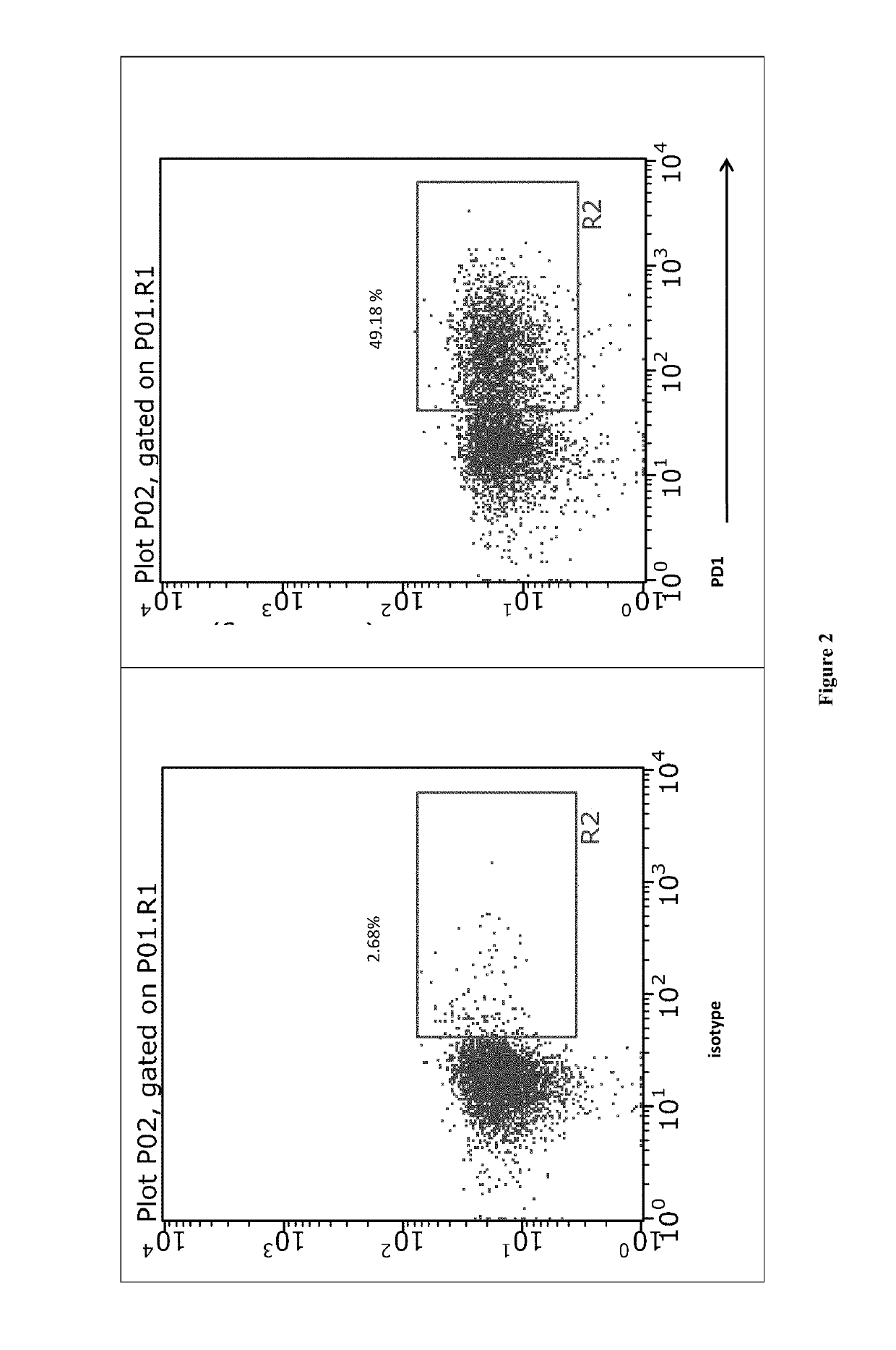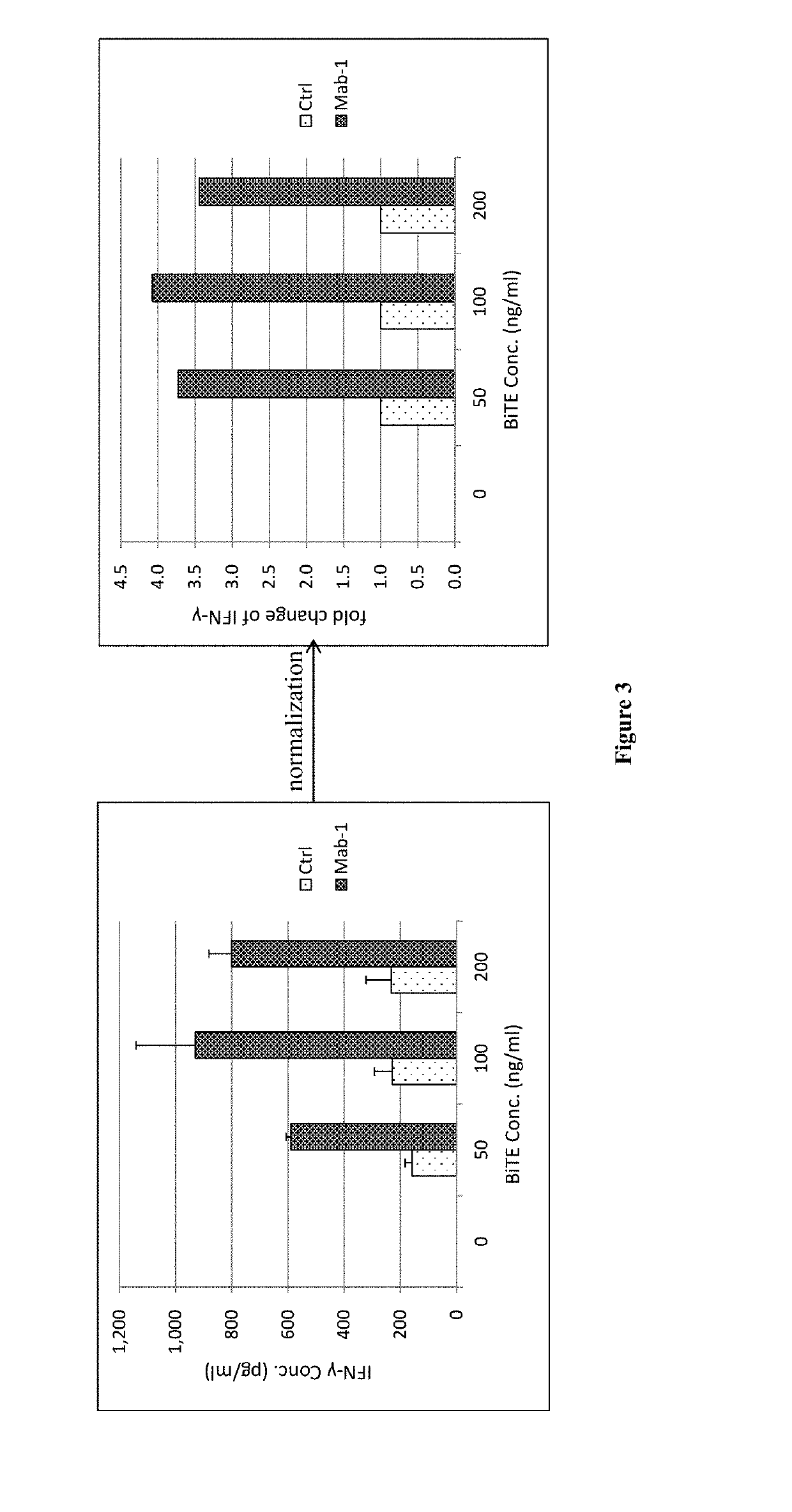Method for predicting efficacy of immune checkpoint inhibitors in cancer patients
a technology cancer patients, which is applied in the field of predicting can solve the problems of inaccurate experimental models, and inability to accurately predict the efficacy of immune checkpoint inhibitors in cancer patients
- Summary
- Abstract
- Description
- Claims
- Application Information
AI Technical Summary
Benefits of technology
Problems solved by technology
Method used
Image
Examples
example 1
[0145]Primary tumor cells from a patient with adenocarcinoma of the esophagogastric junction cultured on feeder cells were co-cultured with pre-activated allogeneic human PBMCs, with different concentration of EpCAM×CD3 BiTE and with or without different anti-PD-1 antibody drugs (0.1 μg / mL), which are Mab-1 and cultured for 24 hours. Human IFN-γ in the supernatant of the co-culture system was measured and as the readout (See FIG. 1). The IFN-γ concentration of each BiTE concentration group was normalized to fold change by antibody treatment group concentration dividing by control group concentration.
[0146]At the group without BiTE, the fold changes of anti-PD-1 antibody treatment groups were all smaller than 1.3, which can be explained by the fact that PBMCs and tumor cells only physically contacted and there was no or litter immune synapse formation between PBMCs and tumor cells, PD-1 signal wasn't activated, little, if any. While at the groups with BiTE, the fold changes of anti-P...
example 2
[0148]Primary tumor cells from a patient with colorectal cancer cultured in Matrigel® were co-cultured with non pre-activated allogeneic human PBMCs, with different concentration of EpCAM×CD3 BiTE and with or without 1 μg / mL of Mab-1 and cultured for 72 hours. Human IFN-γ in the supernatant of the co-culture system was measured and as the readout (See FIG. 3). The IFN-γ concentration of each BiTE concentration group was normalized to fold change by antibody treatment group concentration dividing by control group concentration.
[0149]At the groups without BiTE, Human IFN-γ can't be detected by ELISA. While at the groups with BiTE, the fold changes of Mab-1 treatment groups were all bigger than 1.3 and almost 3.5 times of control groups, which indicated that the primary tumor cells responded to Mab-1 treatment and predicted that there is a substantial possibility that this cancer patient will respond to the tested anti-PD-1 antibody. So, the primary tumor cells cultured in Matrigel® re...
example 3
[0150]Primary tumor cells from a patient with colon cancer cultured in Matrigel® were co-cultured with non pre-activated allogeneic human PBMCs, with different concentration of EpCAM×CD3 BiTE and with or without an anti-PD-1 antibody named Mab-1 (1 μg / mL), and the combination of Mab-1 (1 μg / mL) and 5-(((1R,1aS,6bR)-1-(6-(trifluoromethyl)-1H-benzo[d]imidazol-2-yl)-1a,6b-dihydro-H-cyclopropa[b]benzofuran-5-yl)oxy)-3,4-dihydro-1,8-naphthyrdin-2(1H)-one Sesqui-Maleate (Compound 1, 300 nM) (named as Mab-1+Compound 1, for short), and cultured for 72 hours. Human IFN-γ in the supernatant of the co-culture system was measured and as the readout (See FIG. 4). The IFN-γ concentration of each BiTE concentration group was normalized to fold change by antibody treatment group concentration dividing by control group concentration. Primary tumor cells cultured in Matrigel® responded to anti-PD-1 antibody.
[0151]At the groups without BiTE, Human IFN-γ can't be detected by ELISA. While at the groups ...
PUM
| Property | Measurement | Unit |
|---|---|---|
| molecular weights | aaaaa | aaaaa |
| concentration | aaaaa | aaaaa |
| concentration | aaaaa | aaaaa |
Abstract
Description
Claims
Application Information
 Login to View More
Login to View More - R&D
- Intellectual Property
- Life Sciences
- Materials
- Tech Scout
- Unparalleled Data Quality
- Higher Quality Content
- 60% Fewer Hallucinations
Browse by: Latest US Patents, China's latest patents, Technical Efficacy Thesaurus, Application Domain, Technology Topic, Popular Technical Reports.
© 2025 PatSnap. All rights reserved.Legal|Privacy policy|Modern Slavery Act Transparency Statement|Sitemap|About US| Contact US: help@patsnap.com



